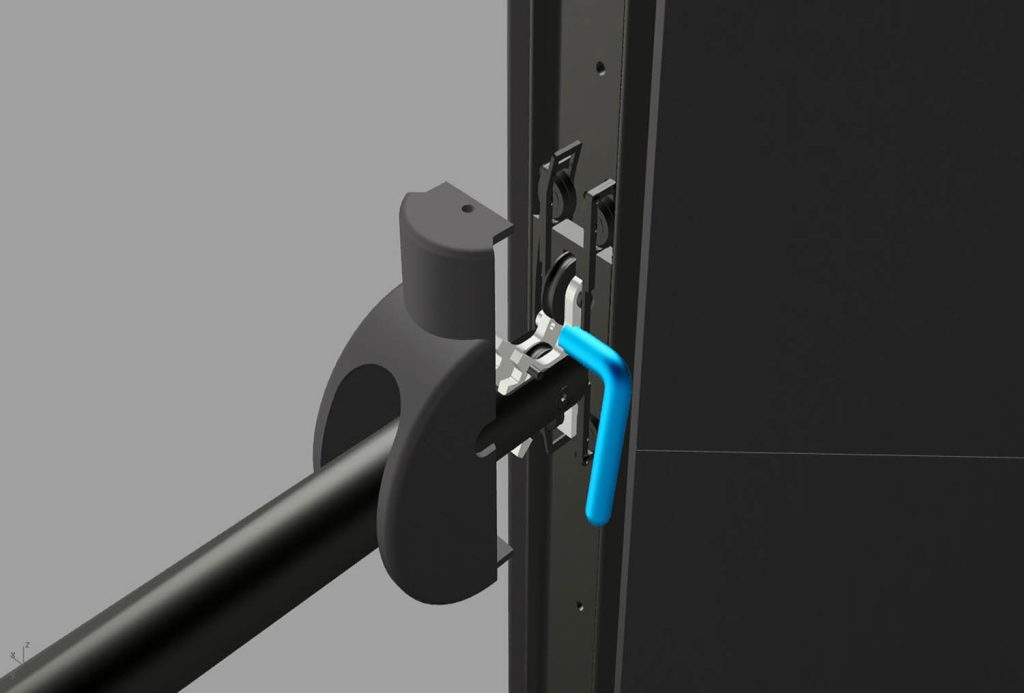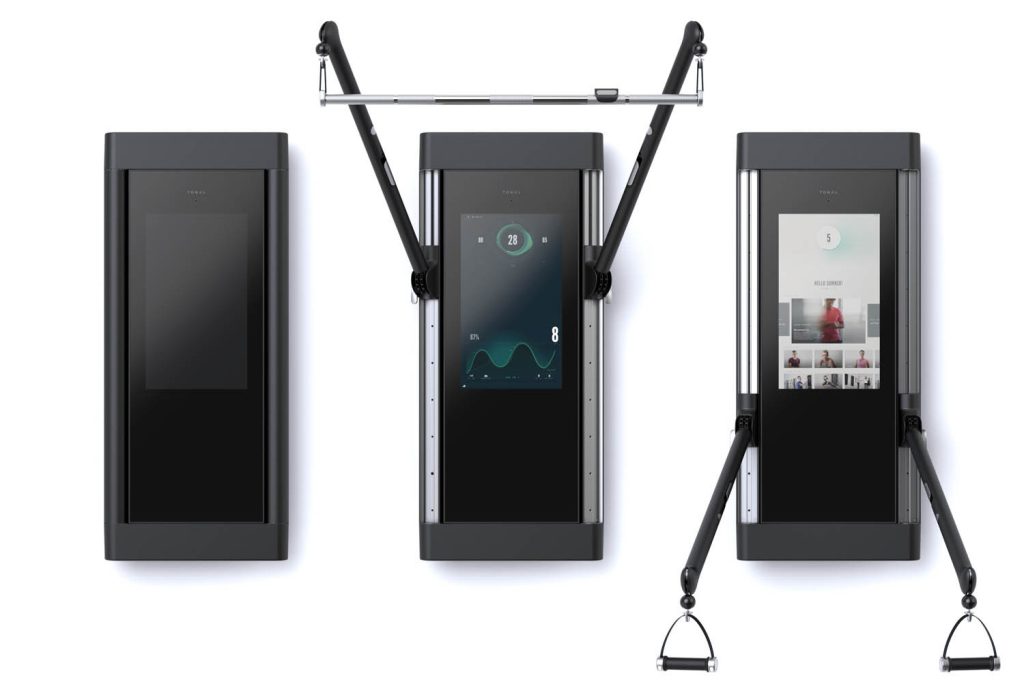Faced with a novel technology, product design agency Whipsaw spotted a tantalising opportunity to develop a standout piece of home fitness equipment. Stephen Holmes speaks to the team behind the design of Tonal about honing the design to create the perfect form
For Dan Harden, the story of his involvement with Tonal begins when inventor Aly Orady arrived at Harden’s Palo Alto, California home with a small cylindrical electric motor. The motor had a pulley and cable attached to its side, and under his arm, Orady was carrying a laptop.
Within minutes, Orady had the motor clamped onto Harden’s dining table and the computer hooked up. He asked Harden to take a seat and grab hold of the cable. “I pulled on the cable and there was resistance,” Harden recalls. “My mind was going, like, ‘Oh shoot! How?!’”
He still had his doubts about how adjustable or smooth this experience could be – until Orady tapped away at the laptop and told him to pull again on the cable. This time, the resistance was even stronger. “It was one of those clairvoyant moments,” Harden says.
As CEO of Whipsaw, a design agency with offices in San Jose and San Francisco, Harden and his team have worked on a wide range of projects, spanning many different industries and verticals. These include personal electronics and wearables for the likes of Google, Samsung and Nike, as well as medical diagnostic, therapeutic and surgical products. Also in the mix are landmine detectors, weld defect scrubbers and an AIdriven robotic false eyelash applicator.
So while the appearance of an inventor on Harden’s doorstep may not be an everyday occurrence, you get the strong impression that this former employee of Frog Design and Henry Dreyfuss Associates always welcomes genuine innovation.
“Every client that comes to us has a set of problems,” he says. Sometimes, these are mostly cosmetic, as in the case of client TP Link, which worked with Whipsaw on creating “gorgeous” routers, he says.
The Tonal project, by contrast, presented the agency with a multidisciplinary challenge, he says: “It had to be beautiful. It had to be functional. It had to be safe. It had to be manufacturable.”
The user experience (UX) part of the puzzle was particularly demanding, he continues. “The interaction on the screen had to be extraordinary and deeply integrated into our design solution. Where are the buttons? How do you control this thing? How do you move the arms up, down, left, right and out? That’s problem solving.”
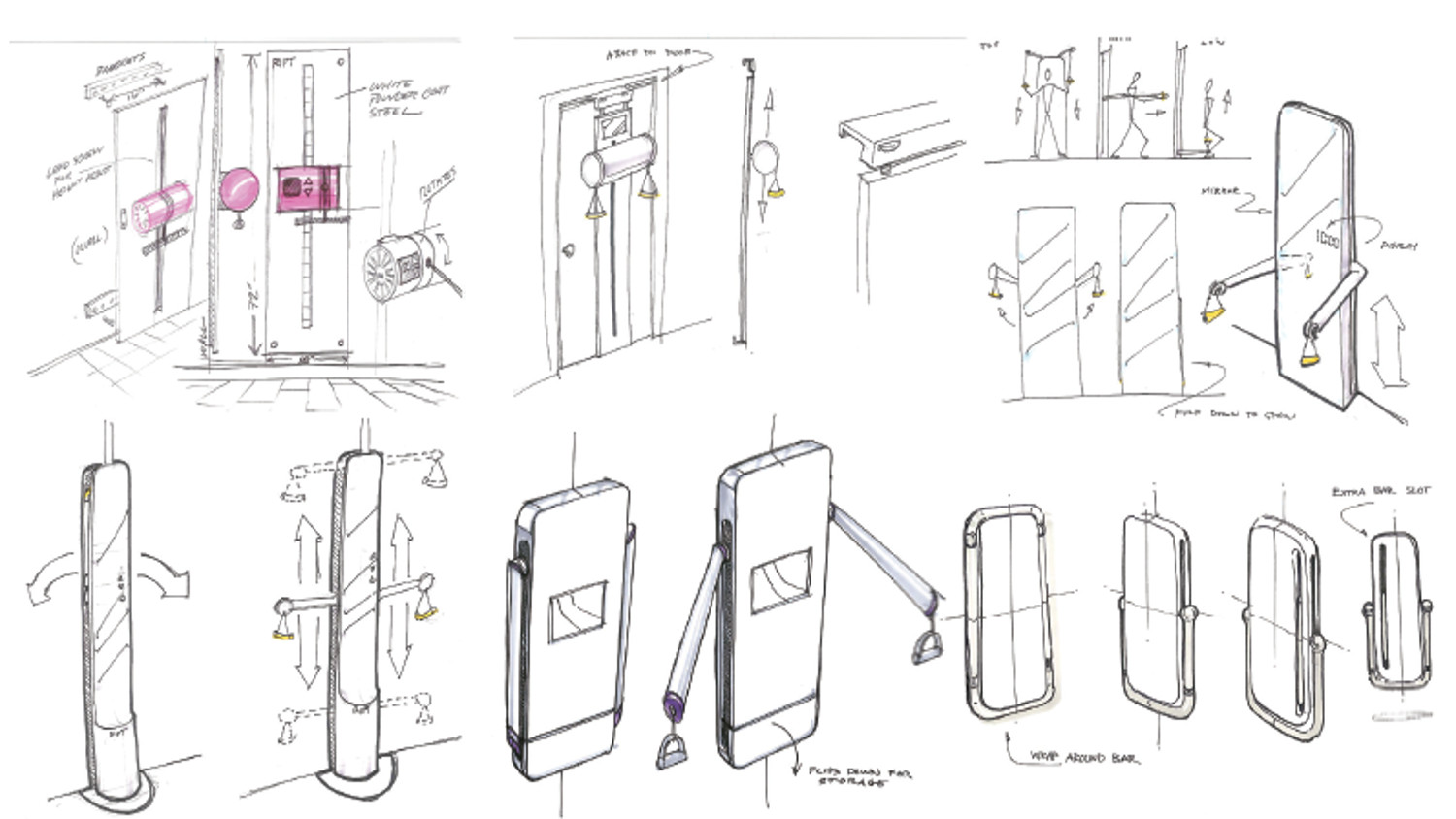
Tonal – power of resistance
Three and-a-half years after the initial dining-table test, Tonal was launched, immediately making waves in the home fitness technology market with its new type of resistance training.
Hanging on the wall like a flatscreen TV, the device uses Orady’s compact electromagnetic resistance motor, controlled by smart software and machine learning, to provide a constantly changing, smooth and precise resistive force.
Tonal is capable of replacing a huge swathe of gym equipment. A pair of independently moving arms pivot out on vertical columns and move up or down to accommodate every workout, ranging from standing lat pull-downs to low squats and lateral chest flys.
Sensors control the weight resistance and respond to the user automatically. If you’re struggling to complete a rep, the machine will automatically spot you. The large display brings live coaching and interactive video workouts direct to your home.
“It’s like this new category of technology design,” says Cole Derby, one of Whipsaw’s directors of industrial design. “It’s part invention, and then part shrinkwrapping and figuring out certain ergonomics and movements on the inside – the motors and pulleys and all this stuff that needs to happen.” Smart fitness technology has boomed since the arrival of brands like Peloton, but with Tonal, there’s a shift away from the notion of heavy equipment taking up space in a room.
“That’s a big distinction of this product, because you’re not standing or sitting on it,” says Derby. “It’s not a treadmill.
It’s not a bike. We can’t rely on gravity or your own body weight. And if you’re pulling up to 200lbs, what are you attached to?”
Tonal is mounted directly onto a wall, a method that Harden says took some convincing for the client, who didn’t like the idea of a product needing professional installation and the impact that might have on elements like online sales.
“He was really sceptical about putting it on the wall – but to us, that was one of these truths that we had to discover,” says Harden. “We wanted users to be reminded about their health and encouraged to work out, so we hung it on a wall.” Another of Whipsaw’s directors of industrial design, Ari Turgel, suggests that the ability to wall-mount the system changes how people think about managing their exercise equipment.
“You start to pair that up with the understanding of the environment, so it’s the user’s home,” he says. “It’s not a gym. It’s probably a tech-savvy user, maybe a little bit affluent; they understand some of the basics, but it’s a totally new thing. And then they have their own user tendencies. So, you start to map all those out, whether that’s in your mind or on paper, and you start to discover these insights.”
Scavenger hunt
Harden describes the product development process Whipsaw undertakes as like a scavenger hunt. Each tiny element provides the next hint to where the design can lead. For him, ideas begin as sketches with pen on paper. “That’s how I work, as I’m old fashioned,” he laughs, “and I suck at CAD!”
But this traditional approach also frees his mind, he adds. “I don’t think about, ‘Oh, how am I going to make this surface in CAD?’ No, I’m thinking about, ‘What do I want this product to be?’ That analogue process for me works, because it allows me to be really connected with the design solution itself, or at least a concept.”
The team talks about the importance of iteration in its process: starting wide and then narrowing down, before going wide again, and once again narrowing down. For Tonal, the design went through over 30 iterations, with the team working tirelessly over mechanical elements, form factors and ergonomics.
“Each time you [iterate], the concept matures, so that the 10% of ideas that actually rose to the top then get really dug deep and have to fail a lot,” explains Turgel.
“You’re sketching, you’re meeting with the client, you’re going back, you’re making mock-ups, you’re testing out with real size humans. We have tall people and short people in the office, and you’re putting them in front of foam cores. And ultimately, you start to then see some opportunities materialise.”
Sketches and Solidworks models combine, and physical prototypes are built. Derby explains that Whipsaw has a ‘boneyard’ of Tonal prototypes and form mock-ups, full-size models made of cardboard, foam core and plywood, all the better to help find the next clue in the scavenger hunt.
“A lot of those [clues] are responding to some of those external factors: Who’s going to use it? How big is this? If it is wall-mounted, it can’t stick off your wall. If it’s in somebody’s home, it needs to be as thin as possible. And a lot of that’s driven by the technology. The motors are a certain size. And so this is where we start to connect the dots.”
Other elements gave the team further clues as to where to go, such as the display and likely interactions with it. Harden explains that they first started with a 13-inch horizontal screen, but quickly realised that it would need to showcase fitness coaches demonstrating exercises. The design rotated to portrait mode, and kept growing in size, until they realised the front could feature a 24-inch touchscreen as part of a continuous glass surface.
The length of the arms determined the height of the product, but then a clever mechanism allows the columns to turn and point the arms inward, tucked alongside and disappearing off the TV, says Derby. “So you don’t see a ‘buff mannequin’ [shape] mounted to your wall.”
The digital design tools Whipsaw uses include Solidworks and Rhino for CAD, Keyshot and Cinema 4D for visualisation, as well as in-house 3D printers and external service bureaux. All of these have had a positive impact on this process of repeated reworkings and problem-solving. “CAD, rendering and 3D printing have had such a massive and fantastic impact in our world. You end up doing more of everything and ‘‘ A lot of those clues are responding to some of those external factors: Who’s going to use it? How big is this? ’’ everything is sped up. Design processes got faster, faster, faster. But it hasn’t made the design process easier. It’s made it more complex, but ultimately, much better.”
Turgel confirms that even with all the tools at their disposal, it’s about understanding what you’re trying to achieve as a designer and then choosing the right tool. “It’s all about understanding every single tool in the toolkit, including the staff – strong points in the way that individuals think. And then pairing those up together with the right challenges and problem-solving tools.”
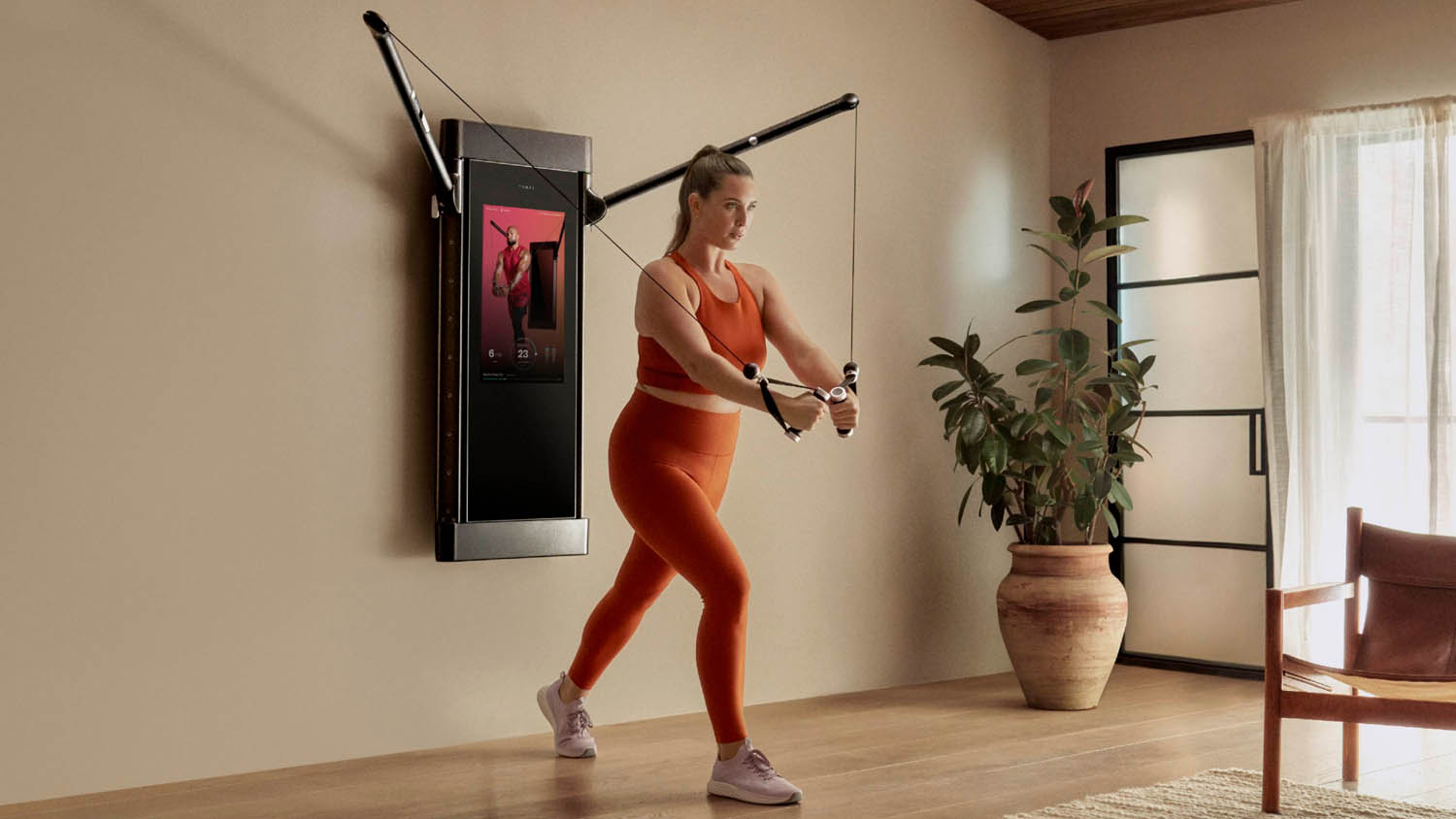
Tonal – home workouts
Since the launch of Tonal, Whipsaw has worked on more home workout technologies, and the company has observed a shift in how such equipment fits into a home. After the success of Tonal, clients and customers now want equipment that blends into the surroundings, but which doesn’t fade from the user’s gaze – whereas before, the idea was to design something as small as possible, so it could be shoved in a closet.
For Tonal’s users, having such equipment in their homes is about getting full use out of it and having the freedom to work out whenever they get a spare moment in their day. To illustrate the point, Harden references his guitar in the corner of the office, perched neatly on a stand.
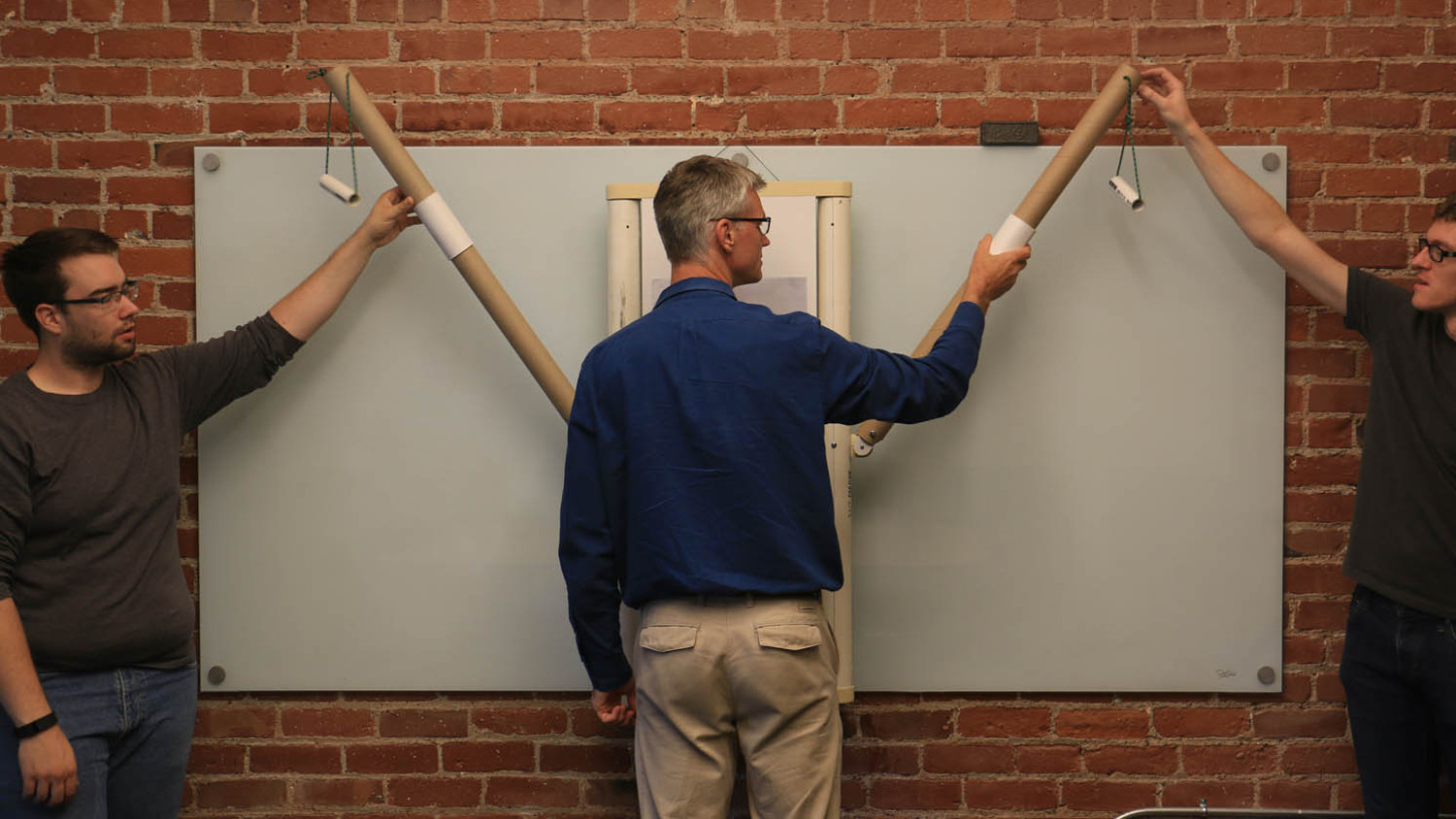
“That guitar, I could keep that in the case down in the basement. And it would be better protected, it wouldn’t get dusty,” he says. “But you know what? I play that thing every single day, because it’s staring at me and saying, ‘Come over here play me.’”
Out of sight, after all, often means out of mind. Tonal, by contrast, is always ready for action and poised to work all the angles – much like the designers at Whipsaw.



